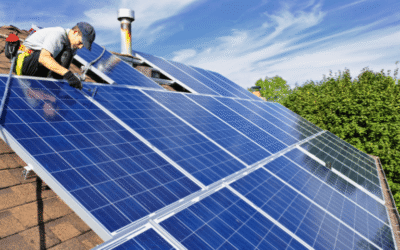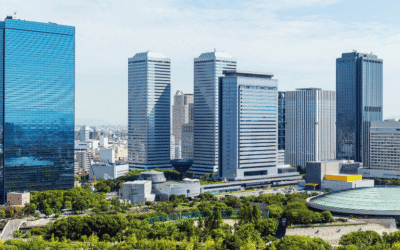LED lighting is becoming standard in commercial and residential buildings, but what makes them different from other lightbulbs? We’ll take a closer look at LEDs to see how they work and compare them to other types of lighting.
LED Lighting Basics
Here’s a quick look at LED lighting.
How LEDs Work
Light emitting diodes (LEDs) are up to 90% more energy efficient than incandescent lighting. LEDs produce light by passing an electric current through an internal microchip. The heat produced by the tiny LEDs is absorbed into a heat sink to ensure optimal performance.
The Average Lifespan of LED Lighting
The lifespan of LED fixtures is different from CFL lamps and incandescent lighting. Instead of being rated when the bulb is no longer emitting light, LEDs’ lifespan is determined when the fixture’s light output is reduced by 30%. LEDs gradually fade unlike other types of lighting that suddenly stop producing light.
Using LEDs in Lighting Applications
LEDs vary in size and shape allowing the bulbs to be used in a variety of lighting applications. They can resemble traditional bulbs or be used as a permanent light source. Smaller LEDs are often used in signage or for undershelf lighting. Their versatility makes LEDs a better fit for lighting applications than traditional fixtures.
Did you know we have an entire series dedicated to LED vs Other Lamps? We cover everything form LED vs. Incandescent, to fluorescents, HID, Induction, High-Pressure Sodium, Mercury Vapor and so much more. Check out our LED vs. Other Lamps series here!
Heat and LEDs
LEDs come with heat sinks that absorb the heat produced by the fixtures. Known as thermal management, it helps ensure the performance of the LED fixture throughout its lifespan.
LED heat sink design varies according to the bulb’s design. The effectiveness of the heat sink is also why all LED fixtures receive the Energy Star rating. LEDs waste less energy emitting heat. The fixtures stay cooler while also outputting the necessary light.
Comparing LEDs to CFL Lamps and Incandescent Lighting
LED lighting is more energy efficient than fluorescent bulbs and incandescent fixtures. Unlike traditional types of lighting that emit heat and light in multiple directions, LEDs have a directional light beam. It means the light is emitted in a specific direction.
The light’s color can also vary with LEDs. Think of the colored lights in signs and traffic signals. It allows LEDs to be used in multiple lighting applications.
While LEDs use diodes to emit light, CFL lamps produce visible light using gas and electrodes. Incandescent lighting uses electricity to heat the internal metal filaments. Unlike LEDs, traditional lighting fixtures use electricity to emit both heat and light.
Benefits of Using Energy Star Rated LED Lighting Fixtures
One of the easiest ways to reduce energy usage and lower electricity bills is by investing in Energy Star-rated lighting.
When you choose LED lighting, it also comes with additional benefits. These include,
- Optimal color quality
- Produces enough light to illuminate the specific area
- Maintenance savings
- Energy savings
Energy Star LED products also go through rigorous testing to ensure quality. You also get peace of mind with the fixture’s warranty.
If you want to learn more about LED lighting or Energy Star products for your next lighting project, contact us today! We can help you choose the right lighting products for your business, all while managing your LED retrofit upgrade. Call 610-558-9773, emailing [email protected], or schedule a call that fits your needs by clicking the button below.








































0 Comments